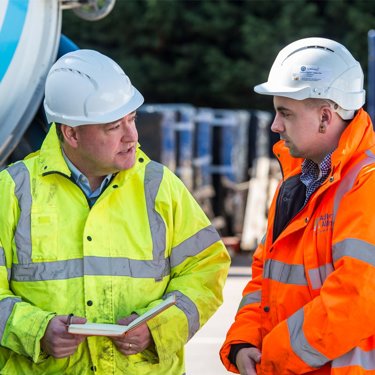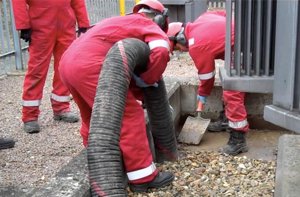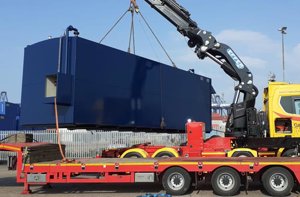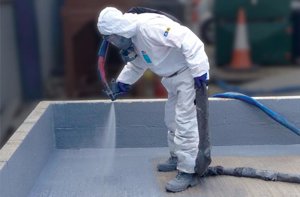
Bund construction and design
We help organisations ensure their secondary containment (bunds) is compliant to relevant regulations by offering a complete design and construction service.
A bund is a facility (including walls and a base) built around an area where potentially polluting materials are handled, processed, or stored, for the purposes of containing any unintended escape of material from that area until such time as remedial action can be taken.
Legislation
CIRIA C736 Containment Systems for the Prevention of Pollution
CIRIA C736 is applicable to the containment of a wide range of inventories and to all sizes of site from small commercial premises with a single storage tank, through to large chemical or petrochemical sites. It also applies to warehouses storing hazardous inventories.
Information is provided on the design, and construction of new secondary containment systems and the also the inspection, maintenance, repair, extension and upgrading of existing installations.
The Control of Pollution (Oil Storage) Regulations
For businesses, organisations and individuals storing oil, whether for use as fleet fuel or to heat and run premises the Oil Storage Regulations aim to prevent or minimise the pollution caused by inadequate storage or oil in above ground oil storage tank installations.
Under the Regulations, storage containers with a capacity of 200 litres or more (commercial) or capacity of 3,500 litres or more (domestic), must be stored in a bunded tank, bowser or other container, such as a drum or Intermediate Bulk Container (IBC), with a secondary containment of no less than 110% of the maximum contents.
The Containment of Bulk Hazardous Liquids at COMAH Establishments containment policy supporting guidance for secondary containment states that:
All above-ground Storage Tanks (ASTs) should be bunded to provide secondary containment.
Bunds shall be subject to a routine and periodic inspection and certification regime by a competent person regarding their condition and performance.
- During the inspection operators would be asked to provide demonstration of inspection criteria and inspection procedures. This should include both routine inspection and periodic detailed review that the structure remains fit for purpose.
- Bund wall and floor construction and penetration joints should be leak-tight. Surfaces should be free from any cracks, discontinuities and joint failures that may allow relatively unhindered liquid trans-boundary migration.
- As a priority, existing bunds should be checked, and any damage or disrepair, which may render the structure less than leak-tight, should be remedied.
HSE guidance
It is normal to limit the number of tanks in a single bund to 60,000 m3 total capacity. However, incompatible materials should have separate bunds. Tanks often have individual bunds.
Bunds should be sized to hold 110% of the maximum capacity of the largest tank or drum. This will allow some latitude for the addition of foam during an emergency incident response .
There are no set rules on the ratio between wall height and floor area and codes vary greatly with respect to recommendations of bund wall height. Low wall heights (1-1.5 m) are often used to facilitate firefighting but are poor defence against spigot flow (where a leak in the wall of a tank passes over the bund wall) or the tidal wave effect of a catastrophic tank failure. In some cases bunds up to height of the tank are used, but these are quite unusual. For high walled bunds, consideration will need to be given to the possibility of tanks floating as the bund fills, causing catastrophic failure.
Bunds are generally fabricated from brick/mortar or concrete but where liquids are being stored above their boiling point additional insulation, e.g. vermiculite mortar, may be added as cladding to reduce the evaporation rate. Such materials provide adequate chemical resistance to most liquids.
Design and construction capability
Our experts will investigate your site and specific requirements before creating a structural design for your bund in line with the relevant regulations, standards, and good practice. Following the design we will excavate, and install the sub-base, line with concrete, tie the steels into the base and walls and finish with another layer of concrete.
Our proprietary bund lining solution will extend the lifespan of your bund.
Bund water control unit
A Bund Water Control Unit has a series of probes to alert of liquid in the bund. This could be leaked product from the storage tank or rainwater. Our experts can recommend a suitable Bund Water Control Unit and install and commission it for you.
Any liquid in your bund should be removed so it doesn’t compromise the efficiency of your bund.
You might also be interested in...
Keep your business compliant and protect the environment while reducing the risk of operational downtime
Find out how Adler and Allan reduce your risk and support you on your journey to Net-Zero through the management and maintenance of assets.
Contact our experts




